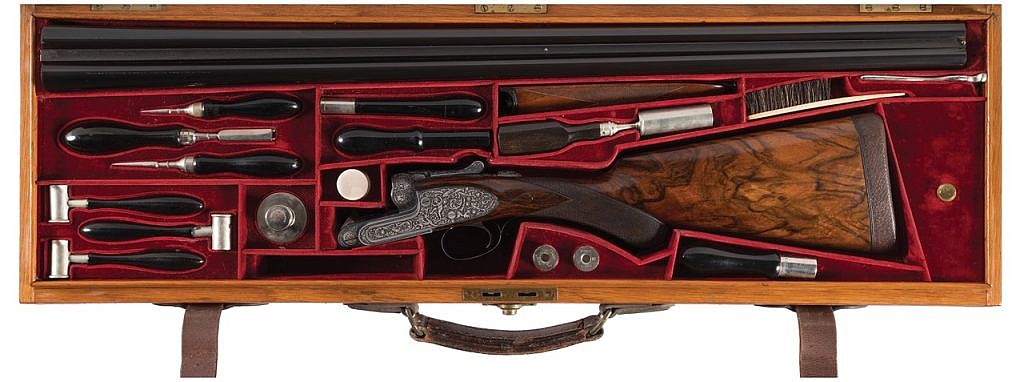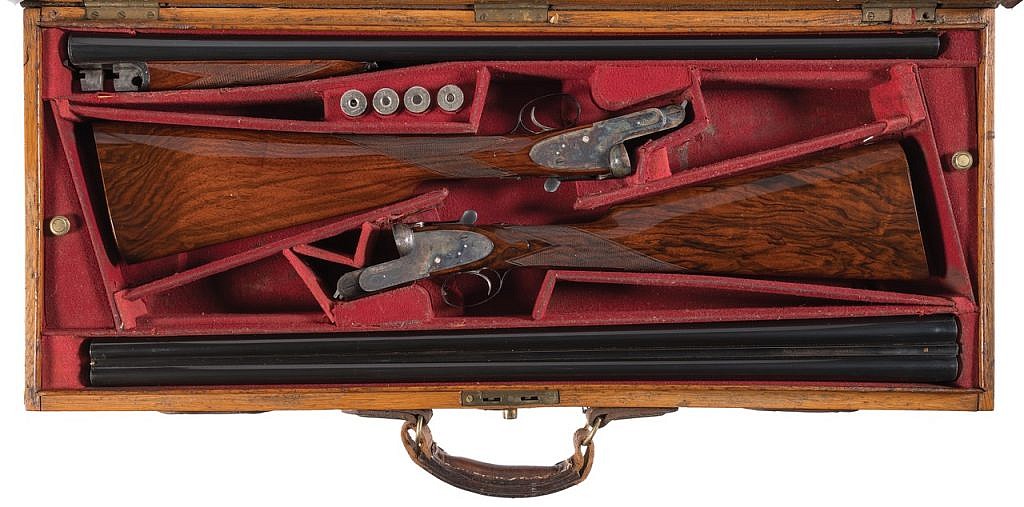
by Terry Wieland
Rock Island’s second premier auction to be held at its new premises in Texas is coming up in mid-May. The catalogue is now available online (www.rockislandauction.com) and includes more than 2,000 lots, to be sold over three days.
As is my wont, the day it went live I started going through it one lot at a time, starting at #1 and, in this case, ending at #3749. (The anomaly in lot numbers occurs because they code them according to day of sale, with those on day two beginning at 1000, and day three at 3000.)
There is the usual vast assortment in terms of age, type, provenance, condition, rarity, and outright oddity. There are ancient matchlocks, Regency duelling pistols, Great War machine guns, and Cold War tanks (yeah, tanks!) In between, we have rafts of Colts, including percussion revolvers, Peacemakers, and 1911s; there are Winchesters of every description, and a goodly selection of Brownings of all types from the Belgian-made era; you will find Kentucky long rifles, both original and recent, and flintlock handguns.

Some individual anomalies that deserve mention are a Street Sweeper (Lot 1674), a Winslow Emperor-grade custom bolt rifle (Lot 1549) , and a Nock volley gun (Lot 249). Personally, I think the three together would make an outstanding three-gun armory for the right guy, but you’ll need to marshal about $40,000 to have a shot at it if they all sell near the top estimate.
Having gone through the catalogue, looked at every item, and compiled a list of guns I would like to examine and handle (if I should make it to the auction in person) or consider bidding on even if I don’t, a couple of things struck me: First, there are not many fine English shotguns of the Purdey class compared to other years; there are no classic German Schützen rifles from the golden age of the late 1800s, nor are there many American Schützens.

Of course, these things go in waves. A major collector may die or decide to disperse his collection and this may flood the market, even if he releases only a dozen or so a year. For a while, we saw up to a dozen German Schützens for three or four auctions in a row; then they dried up. One year, you could not move around the viewing hall without tripping over another Boss or Holland & Holland game gun, and I remember three auctions, back to back, that boasted extraordinary Stevens, Ballard, Maynard, and Winchester High Wall Schützen rifles.
On the other hand, not many gun auctions have tanks, and here we have a Centurion, a World War II Stuart, and a Swiss Panzer 61, along with a fine collection of anti-tank guns. I can’t think of any place except America where you could find such an array for sale to the public. For what it’s worth, there is a Walker Colt in the auction, expected to sell for $145,000 to $225,000, while the Centurion should bring $100,000 to $200,000. An interesting comparison.

Of course, there is the usual wide selection of Lugers, military and civilian, new and old, as well as a clutch of Thompson submachineguns. One of these days I may succumb to my boyhood fantasy and find the money to at least bid on a Thompson.
Also, not much in the way of custom bolt-action hunting rifles bearing names like Biesen, Fisher, Echols, or Wiebe.
There are two shotgun lots that deserve a look. First is a Purdey 12 bore, Lot 482, cased, built in 1912 and engraved by Aristide Barre, who did work for Purdey until his death in 1915. The exotic engraving seems to be the big selling point, justifying the estimate of $30,000-$40,000, but I find the gun itself interesting, regardless. It was built for a Spaniard, and while Purdey apparently told Rock Island it was a wild-fowling gun, it looks more like a box-pigeon gun to me, with its 31-inch barrels choked IM-F and 2¾-inch chambers. (Wildfowl guns more commonly had 3-inch chambers.)

Lot 481 is a matched pair of Boss side-by-sides, with consecutive serial numbers, in a two-gun case. They are conventional configuration game guns (if you can use the word “conventional” in connection with any Boss) with 29-inch barrels. They have been professionaly restored, and one re-proofed, but look delicious. The estimate, and it seems low to me for a pair of Boss guns, is $20,000-$30,000.

Here’s what I find strange: The Purdey is of a configuration that is unusual today, and not ideal for anything except box pigeons or Helice. Also, it has a quite short length of pull (13⅞-inch). So does the engraving account for the higher estimate?
Both the Purdey and Boss have been “refurbished,” a description that varies widely.
This is one case where you really need to be there, pick them up, handle them, and see which one(s) murmur your name. Is it worth the trip to Dallas? Hmmm…
Gray’s shooting editor Terry Wieland has traveled farther for less reason, and is giving this some serious thought. That is not a good sign.
